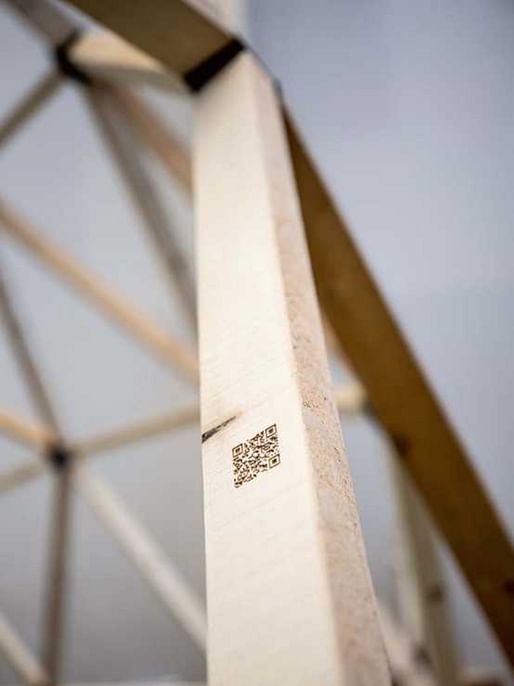
A group of research students at ETH Zurich has completed a timber geodesic dome constructed from nothing but demolition waste. The research group, led by assistant professor Catherine De Wolf of the university’s Department of Civil, Environmental and Geomatic Engineering, sees the project as a demonstration of the potential for circular economics.
Work on the project began in October 2021 when the group, titled the Circular Engineering for Architecture lab, gained permission to salvage materials from an old car depot scheduled for demolition. Through dismantling an entire floor of the building, the group salvaged OSB panels, wooden beams, steel girders, and plastic piping for use in the pavilion.

According to the group, the decision to construct a geodesic dome from the waste materials was due to the shape’s stable, efficient, and elementary structural properties. “What’s special about this particular dome is that it uses wooden struts of varying lengths to form the sides of the triangles, thereby making the most efficient use of the reused materials,” they note. The wooden struts are linked by plastic nodes formed from salvaged water pipes.

Having cataloged the available lengths of timber from their salvage operation, the group programmed an algorithm to calculate the optimum geometry and dimensions for the dome’s structure with minimal waste. The algorithm is one of several digital elements embedded in the process, another being a digital platform that tracks the status and quality of every item used in the dome’s construction.

The group has sought to use the project to make a broader statement about the role of material cataloging in the construction industry, specifically the use of digital material passports. In the dome’s case, each material piece has been marked with a QR code linking directly to a corresponding online material passport. The QR codes were etched into each timber piece using a laser cutter.

According to the team, the availability of similar information in larger-scale buildings would allow architects to identify salvageable materials when such buildings are scheduled for demolition. “The ideal thing would be to tell companies about demolition projects well in advance, because then they could start hunting for buyers for the materials right away,” notes De Wolf.

News of the dome comes in the same month that a separate group of students and researchers from ETH Zurich constructed a prototype 3D printed ‘eggshell pavilion.’ Earlier this year, a team at ETH Zurich also unveiled FoamWork, a project exploring how foam 3D printing can assist in creating concrete formworks.

Other live student projects recently featured in our editorial include a team at IAAC who 3D printed a zero-waste housing prototype using local earth and a series of tiny homes to fight homelessness produced by students of the University of Buffalo, Drury University, and Rice University.
No Comments
Block this user
Are you sure you want to block this user and hide all related comments throughout the site?
Archinect
This is your first comment on Archinect. Your comment will be visible once approved.